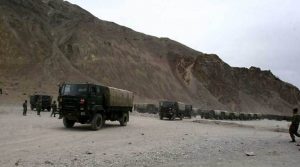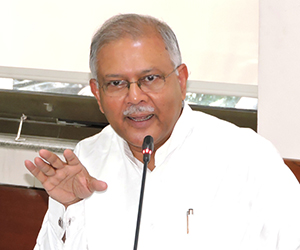China can now be seen to moving its borders into India.

Srishti Shankar, INN/Delhi
Clearly documented and formulated by one of the prestigious news authority in our country- “ there have been almost nine instances which have been recorded of the Chinese incursion into the India territory since the 1980s’.”
Pieced together, these accounts validate India’s long-standing concern that China will inch forward from the Line of Actual Control using a strategy called ‘salami-slicing’.

What is LAC?
Line of control is a conceptual concept which is crafted in order to separate Indian and Chinese territory. According to India, the LAC is 3,488km long, while China considers it to be around 2,000km long.
It crosses four states and a Union Territory on the Indian side; on the Chinese side is the Tibet Autonomous Region.
The LAC is divided into three sectors: eastern, central and western. The central sector is largely dispute-free. In the eastern sector, China claims the Indian state of Arunachal Pradesh for itself and calls it South Tibet. The people of eastern Ladakh say that the Chinese have progressed from salami slicing to chopping away chunks of Indian territory over the last few years. “There was a time when the lands were being encroached in inches but now they have dropped all pretence and are grabbing the territory in kilometres,” said Gurmet Dorjay, a councillor of the Ladakh Autonomous Hill Development Council in Ladakh’s Leh district. Dorjay has documents to prove that the PLA now sits on two acres of agricultural land that once was owned by Dorjay Dawa, the village head of Rupsho in south-east Ladakh.

Its History:-
The high-altitude has been heavily militarized since 1962 when China launched an offensive into Indian territory.
However, as reported by many China’s actions appears to be in response to India’s construction of roads and airstrips adjacent to the Line of Actual Control (LAC), which will improve connectivity and enable easier mobility for Indian troops in the area. Construction has paused during the coronavirus lockdown but is due to resume imminently.
The Indian side has always taken a very responsible approach to border management. But, the recent feud between the countries has sparked various rumours lately.

Ashok K Kantha, a former Indian ambassador to China and now director of the Institute of Chinese Studies based in Delhi said, – “the recent incursions and border aggressions from China were “far from routine occurrences”.
He said: “This escalation is serious; I don’t think this is just a localized incident.
China’s behavior is more aggressive this time, backed up by a fairly large number of troops, which is not typical of this border where troop levels tend to be low on both sides. It could be a territorial claim or part of a wider message to India that they need to be more mindful of China on sensitive geopolitical issues.”
Kantha said it was “In the interest of both India and China to keep the situation under control and maintain relative peace”.

